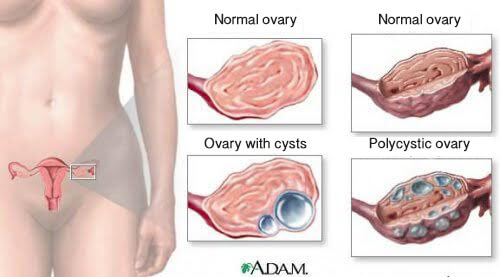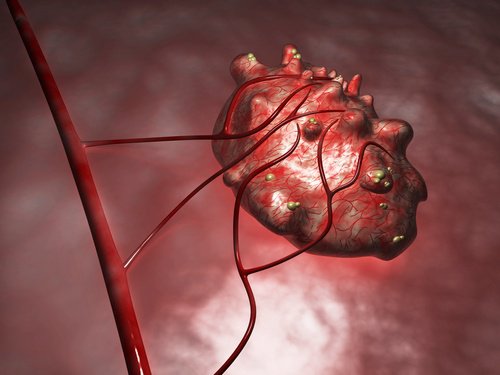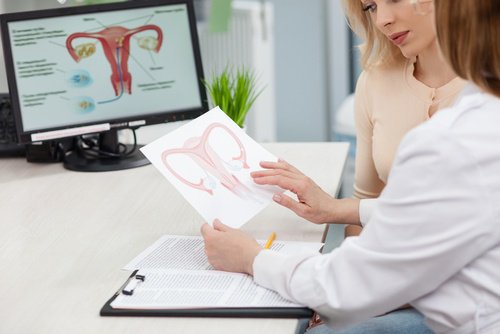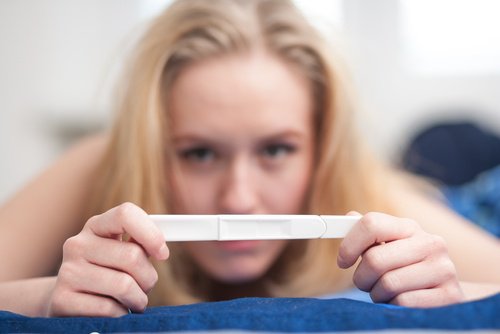9 Important Facts about Ovarian Cysts


Reviewed and approved by the doctor Maricela Jiménez López
The word “cyst” is one of the more common conditions that can affect a woman’s reproductive system during their lifetime. This is a benign disorder that develops in the ovaries, which can eventually cause complications if not dealt with in time. In today’s article we look at all the facts about ovarian cysts that you need to know.
While most of the time it doesn’t pose a real danger to health, it’s important that all women know what ovarian cysts are and what to do if they’re diagnosed with one.
That’s why we wanted to share the nine most important facts about ovarian cysts you should be aware of.
1. Facts about ovarian cysts – what are they?

If a pregnancy doesn’t occur, the ovary reabsorbs the follicle. However, if this process doesn’t take place, the cell becomes a cyst, giving rise to this type of foreign body.
Please read: The 5 things that affect ovarian health
2. Ages at risk
Women are at the risk of developing this condition after they reach puberty and throughout their childbearing years. Ovarian cysts usually disappear with the onset of menopause, but in certain cases they may appear later in life.
3. Related factors

However, experts link them to the following factors:
- Irregular menstrual cycles
- Undergoing fertility treatments
- Hormonal imbalances
- Genetic factors
4. The main symptoms
As with other disorders related to the reproductive system, the symptoms tend to get confused with other more common conditions. The problem is that they’re not always noticeable early on, and many women prefer to ignore them.
Among them are the following:
- Irregular menstrual periods
- Abdominal and pelvic pain that radiates to the back or legs
- Severe pelvic pain before and during menstruation
- Severe pain during intercourse
- Vomiting and nausea
- Tenderness in the breast tissue
- Feeling of heaviness
- Abdominal distension
- And, finally, pressure in the rectum or bladder
Read more: 4 Signs of Irregular Periods
5. How are ovarian cysts detected?

6. What is the treatment?
Usually your gynecologist will recommend periodic checks to determine whether the cyst absorbs over time. If it increases in size or causes pain and other complications, then your doctor may ask you to take oral contraceptives or undergo a surgical procedure to remove it.
7. Cysts and fertility

8. They don’t normally occur during menopause
A woman who has entered menopause should have no risk of ovarian cysts. If one is present, it should be a cause for concern. According to the experts, cysts or tumors during menopause can be a strong indicator of cancer.
A doctor should monitor this very carefully.
9. Polycystic Ovary Syndrome (POS)
The appearance of cysts in various parts of the ovary, such as a cluster of seven to 10 different follicles, is a condition known as Polycystic Ovary Syndrome (POS). It can be caused by difficulties during ovulation and the main culprit is hormonal imbalance.
In such cases, more care and attention is required because it’s usually accompanied by alterations in menstruation, infertility, excessive body hair, and more. In most cases these cysts don’t cause any problems and will disappear by themselves with time.
Nevertheless, it’s important that you undergo regular medical checkups to ensure that all is well.
All cited sources were thoroughly reviewed by our team to ensure their quality, reliability, currency, and validity. The bibliography of this article was considered reliable and of academic or scientific accuracy.
- Mir, I. A., & Mir, S. A. (2003). Acute abdomen following torsion of ovarian cyst. JK Practitioner. https://doi.org/10.1038/nrg3495
- Moyle, P. L., Kataoka, M. Y., Nakai, A., Takahata, A., Reinhold, C., & Sala, E. (2010). Nonovarian Cystic Lesions of the Pelvis . RadioGraphics. https://doi.org/10.1148/rg.304095706
- Bottomley, C., & Bourne, T. (2009). Diagnosis and management of ovarian cyst accidents. Best Practice and Research: Clinical Obstetrics and Gynaecology. https://doi.org/10.1016/j.bpobgyn.2009.02.001
- MedlinePlus. Quistes ováricos. https://medlineplus.gov/spanish/ovariancysts.html
- Academia Americana de Médicos de Familia. Quistes ováricos. https://es.familydoctor.org/condicion/quiste-ovarico/?adfree=true
- Office on Women’s Health. Quistes ováricos. https://espanol.womenshealth.gov/a-z-topics/ovarian-cysts
- MedlinePlus. Síndrome de los ovarios poliquísticos. https://medlineplus.gov/spanish/polycysticovarysyndrome.html
- MedlinePlus. Quistes ováricos 2. https://medlineplus.gov/spanish/ency/article/001504.htm
This text is provided for informational purposes only and does not replace consultation with a professional. If in doubt, consult your specialist.








